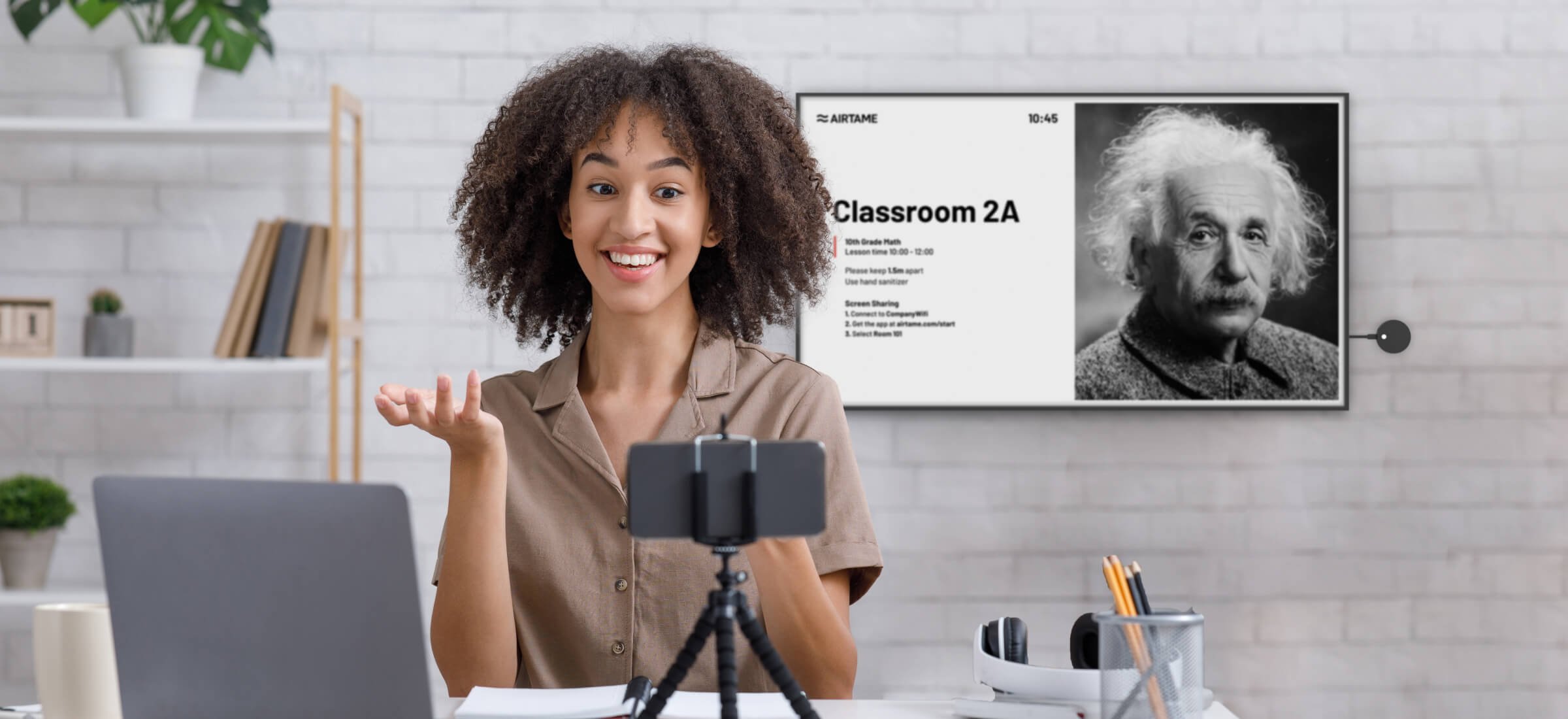As schools and educational facilities around the world plan for a gradual reopening, blended learning is becoming a more commonly used term within education.
How to embrace blended learning: Tips from an edtech expert

We spoke to digital education expert, Joana Kompa, about the importance of embracing technology as part of a blended or hybrid learning approach, and how schools can effectively adopt educational technology in the classroom.
What is blended learning?
Blended learning – while not a new concept – is gaining momentum as educational institutions around the world continue to manage full or partial lockdowns, and prepare for gradual reopening.
Blended learning refers to an educational setup that involves a mix of face-to-face classroom time, independent online lessons, and a hybrid of in-person and remote learning.
According to Joana, embracing digital technology in the classroom to create a blended learning setup presents many benefits: “It enables us to put teaching and learning materials online, so we are relatively independent of space and time. This creates greater flexibility – learners can work on materials at their own pace, in their own time.”
Blended learning also empowers students to take more ownership of their education experience: “Some students become more self-reliant and self-directed, as they have access to more learning resources, such as videos and infographics online. As a result of this, the traditional role of student and teacher has changed. Teachers no longer exist to disseminate knowledge – they are actively involved in all aspects of the learning process.”
Risks of not adopting blended learning set up
According to Joana, educational institutions that fail to embrace digital technology in the classroom will negatively impact student learning: “Teachers who keep hanging onto traditional instructional pedagogy and analog media will notice that the learning culture of their students continues to drift away from what is happening in the classroom.”
Joana also notes that today’s students are more accustomed to receiving feedback on an ongoing basis: “Young people who grow up with social networks are used to continuous feedback from their peers. By contrast, traditional school settings are among the few remaining places where little or no feedback on learning processes is offered. Subsequently, schools that resist reforming their technological infrastructure and pedagogical strategies are bound to frustrate teachers, students and parents alike.”
Tips for embracing blended learning
When it comes to embracing a blended learning approach in the classroom, Joana has some useful tips.
- Invest time in training: Like all of us, teachers are usually short on time. Most teachers around the world expected to deliver 25+ hours of teaching per week, as well as time spent marking and gradings student’s work. In order for an effective blended learning setup to be implemented, Joana suggests schools must provide dedicated training resources and allow teachers to use a percentage of their work hours to become familiar with the technology they are using in the classroom: “In order to have innovation, we need to make time for it. There are some schools that think they can fix everything through tech – they need to understand how the technology actually works, in particular, how to deliver pedagogical strategies.”
- Develop team-building opportunities for teachers: According to Joana, it’s crucial that schools embrace a team-building approach to blended learning in order to develop buy-in from teachers: “Teachers need to be collaborative and work as a team in order to multiply their competency.” Joana suggests that this can be achieved by setting up educational centers, where educational trainers can share their knowledge and teach other trainers in a practical way.
- Be patient: Like any sort of major change in the way we work, a shift in teaching methods in the classroom takes time to adapt to and master. Many leaders within education expect technology to be a magic tool that will fix everything and create the perfect blended learning environment once it’s installed. Joana suggests that this “quick-fix” approach to blended learning is rarely successful: “Educators must spend time understanding how different products work together in order to benefit the class and improve teaching practices.”
Embracing a blended learning setup with Airtame
If you’re interested to find out how Airtame’s support for bring-your-own-device, one-to-many screen sharing and remote management contributes to blended learning, you can check out this blog.